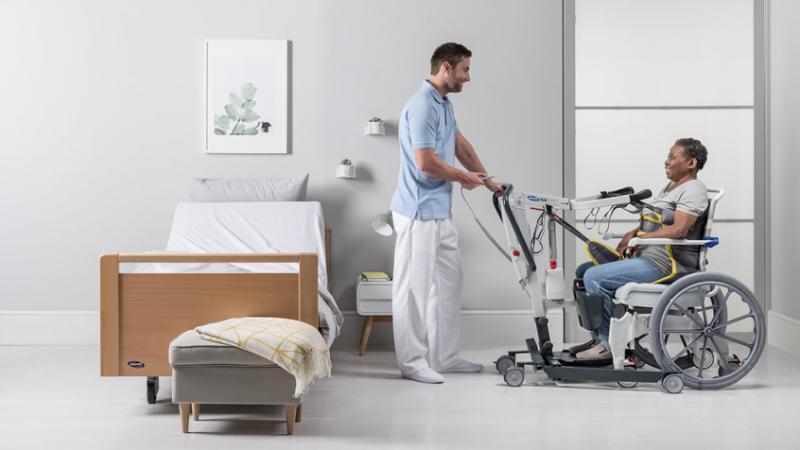If you have impaired mobility, everyday movements like getting into bed or having a bath can be challenging. There are a range of mobile hoists and slings that can help make life easier, letting you get back to doing the things that you enjoy.
What is a mobile hoist?
Hoists are a type of mechanical lifting device designed to move the user easily and safely from one place to another. They can be used for short periods of time, for example while recovering from surgery, or as a long term solution. Mobile hoists have a frame with small wheels and brakes, which means they can be moved around your home and there is no installation needed.
A hoist removes the need to rely on a carer to physically lift you if you need help to stand up or move from your bed to your wheelchair, for example. This makes moving around safer, more comfortable and easier for you and your carer or loved one.
Choosing a hoist can be daunting, and they need to be used appropriately to avoid accidents. Our guide will make it simple for you to choose the right equipment for your needs.
How to choose the best mobile hoist for you
Mobile hoists are a practical choice for a home environment. Keep in mind that professional carers need professional training to use a hoist. Unpaid carers are not required to, but it’s highly recommended to get professional advice. There are a few things you’ll need to consider when choosing a mobile hoist:
Needs
Different types of mobile hoist offer different kinds of support. Stand assist hoists are designed to help you to your feet, while others can help make a transfer easier from a chair to a bed. The right model for you will depend on your physical, cognitive and medical needs.
When lifting and transferring, it is important to make sure you are comfortable and feel secure. For some people, this means having padded leg bands in the sling for extra comfort. For others, it’s being able to make eye contact with their carer while using the hoist.
The size
Different hoist models cater to different size users. The ‘safe working load’ is the maximum amount of weight the hoist can lift. Invacare hoists come with a range of safe working loads, from 140kg to 200kg, depending on the model. You should also consider the height of the user, as some models have a maximum user height limit.
The space available
If you are planning to use the hoist in your bedroom, for example, you need to make sure that the bed and other furniture won’t get in the way of the hoist when you’re using it. Compact mobile hoists are designed for smaller spaces and so can be an ideal solution for home environments.
If you are planning to move the hoist between rooms, then you’ll need to check that there is enough space. Measure doorways to ensure that they are wide enough, and check you will have enough space to move around furniture.
Is your home suitable?
Check that the floor of the rooms you plan to use the hoist in are suitable. You need to be able to move the hoist across them – loose or deep-pile rugs can make this challenging. You’ll also need to have somewhere to store the hoist when it’s not in use.
Choosing a sling
Slings come in a range of styles, sizes and fabrics, to help tailor your mobile hoist to your exact needs. Our sling guide is a good place to start thinking about what model is best for you. All Invacare slings come with a green label on the back that illustrate how to position the sling correctly.
Get the right mobile hoist for your needs
Invacare lifters and hoists make user transfer easy, safe and comfortable for you and your carer. Built with high-quality materials, an Invacare mobile hoist could help make your day to day life that little bit easier.
